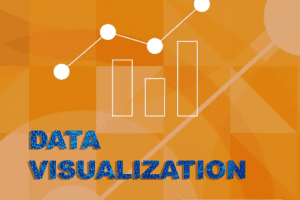Data visualization: A Powerful tool to analyze complex data

Data visualization is a powerful tool that allows us to understand and analyze complex data sets. By presenting data in visual formats such as charts, graphs, and maps, we can easily identify patterns, trends, and relationships that might otherwise go unnoticed. In this blog, we will explore the importance of data visualization and its various applications across different industries.
One of the key benefits of data visualization is its ability to simplify complex information. When dealing with large data sets, it can be challenging to extract meaningful insights. However, by using visual representations, we can condense the data into a more digestible format, making it easier for us to interpret and make informed decisions.
Data visualization also enables us to detect patterns and trends in data. By visualizing data over time or across different variables, we can identify correlations and spot anomalies that might be indicative of underlying relationships. This can be particularly useful in fields such as finance, where identifying market trends can help investors make more informed decisions.
Moreover, data visualization can aid in the communication of data-driven insights. By presenting data visually, we can effectively convey complex information to a wide range of audiences, even those without a strong background in data analysis. This is especially important in fields such as healthcare, where visualizing patient data can help doctors and researchers identify patterns and make more accurate diagnoses.
In recent years, data visualization has become increasingly important in the field of business intelligence. Organizations are now collecting vast amounts of data from various sources, and data visualization tools allow them to transform this data into actionable insights. By visualizing key performance indicators, sales data, and customer feedback, businesses can make data-driven decisions to improve their operations and drive growth.
Data visualization is not limited to business applications alone. It is also widely used in fields such as journalism, education, and public policy. Journalists can use data visualization to present their findings in an engaging and user-friendly manner, making complex stories more accessible to the general public. Educators can leverage data visualization to help students understand and analyze data, fostering critical thinking and problem-solving skills. Furthermore, policymakers can use data visualization to present data-backed arguments and support evidence-based decision-making.
In conclusion, data visualization is an essential tool for understanding and analyzing complex data sets. By presenting data visually, we can simplify information, detect patterns, and communicate insights effectively. Its applications span across various industries, including business, healthcare, journalism, education, and public policy. As we continue to collect more data, the importance of data visualization will only continue to grow, enabling us to make more informed decisions and uncover hidden insights.
